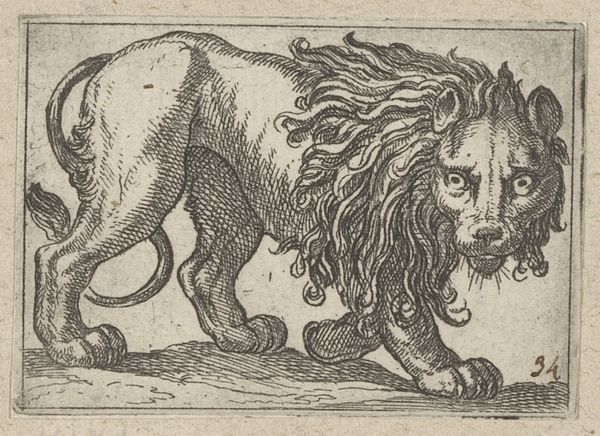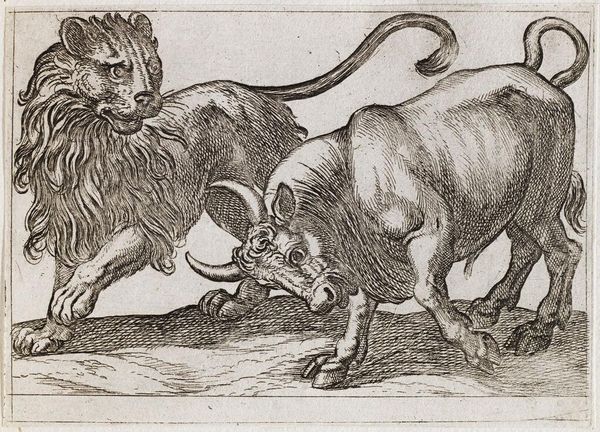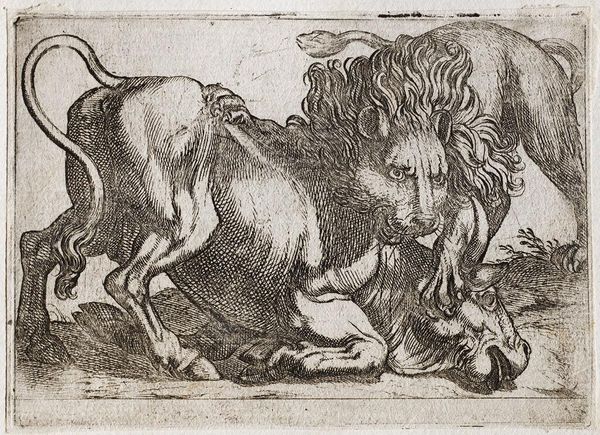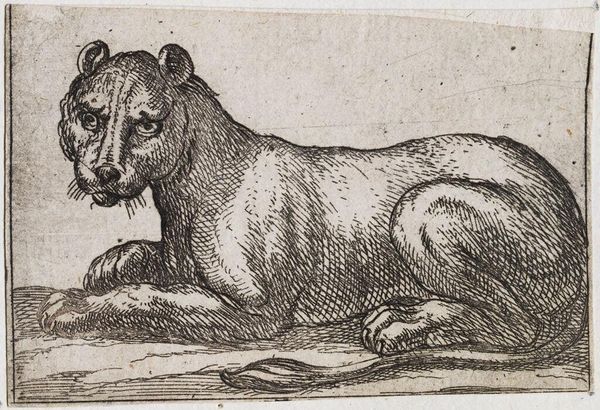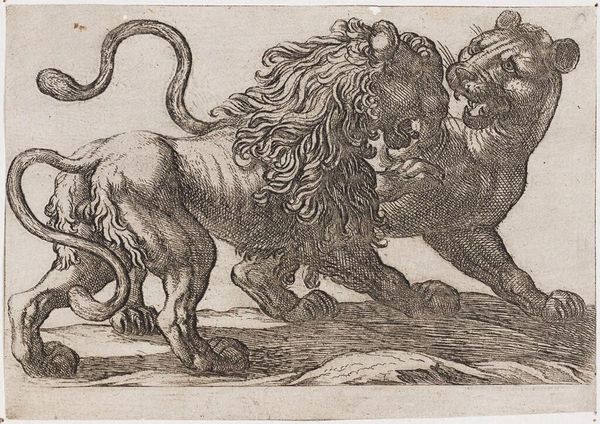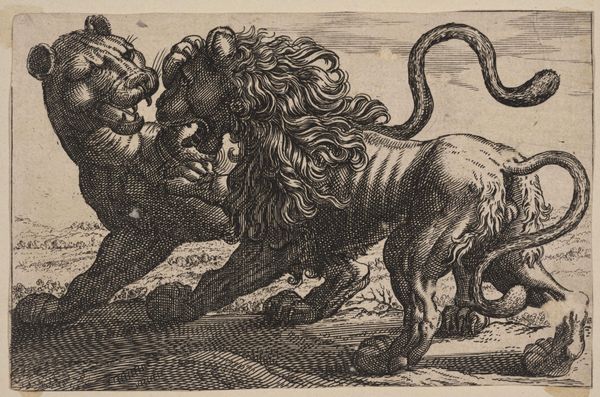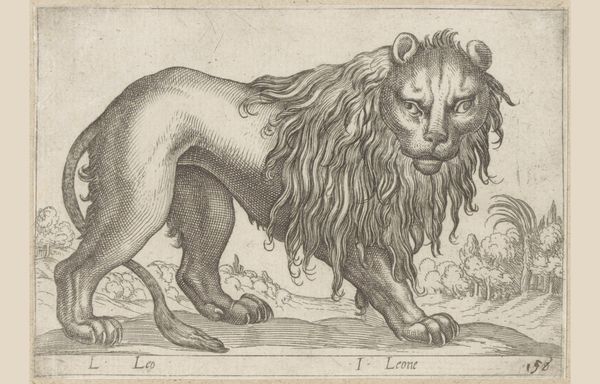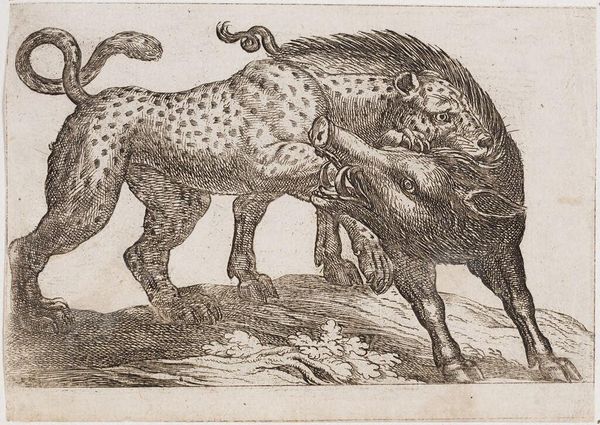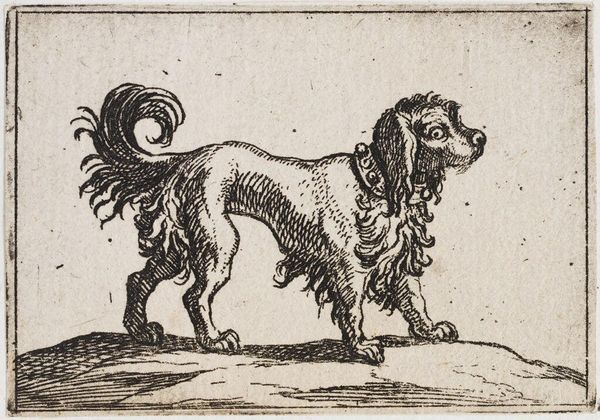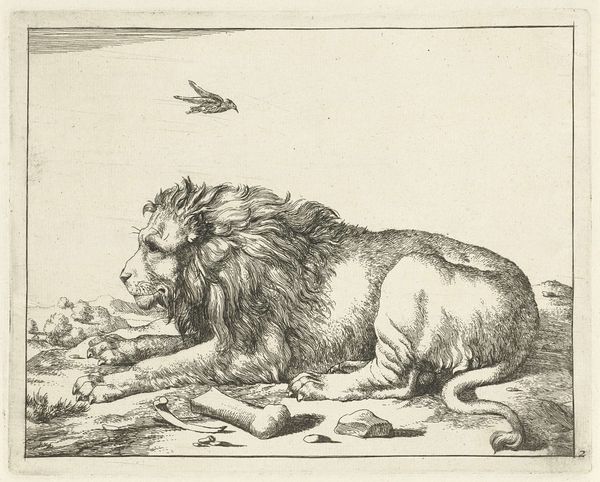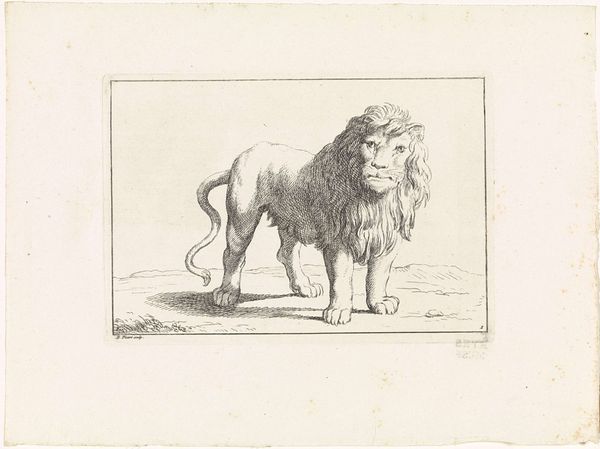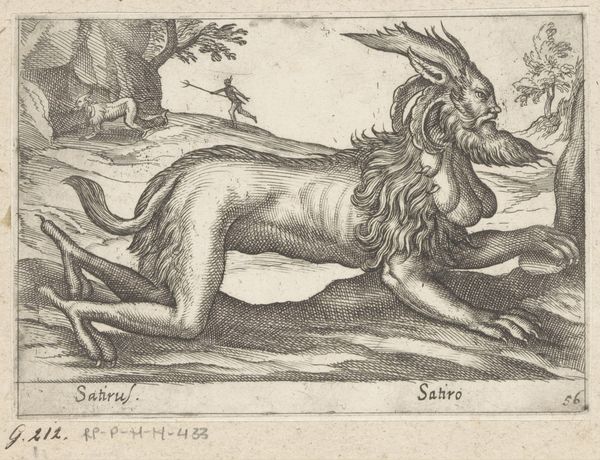
Copyright: CC0 1.0
Curator: Here we have Antonio Tempesta's "Walking Lion," currently residing at the Harvard Art Museums. It's an engraving, likely from the late 16th or early 17th century. Editor: That's some scraggly line work! It almost feels frantic, like the lion's about to bolt or pounce. You can feel the labour in this etching, it's all exposed on the surface. Curator: Exactly! Tempesta was known for his dynamic battle scenes, and even in this single animal portrait, you get that sense of latent energy. Look at the texture, too—the way he uses cross-hatching to suggest muscle and fur, really brings out the materiality of the lion. Editor: And what an odd beast. Is it meant to be powerful or pathetic? It looks like a caricature, not a majestic king of beasts. I mean, look at the cross-hatching. It makes the lion look a bit moth-eaten. Curator: Well, there's something wonderfully human in its vulnerability, don't you think? It reminds me that even power has its fragile side. Editor: I suppose, but I'm more fascinated by how the artist made it rather than what it represents. The process is the key here. Curator: A bit of both, I'd argue, but it's a truly memorable image—raw, immediate, and powerful in its imperfection. Editor: Yes, its roughness does give it a singular edge, a certain handmade quality that connects it to its historical moment.
Comments
No comments
Be the first to comment and join the conversation on the ultimate creative platform.
